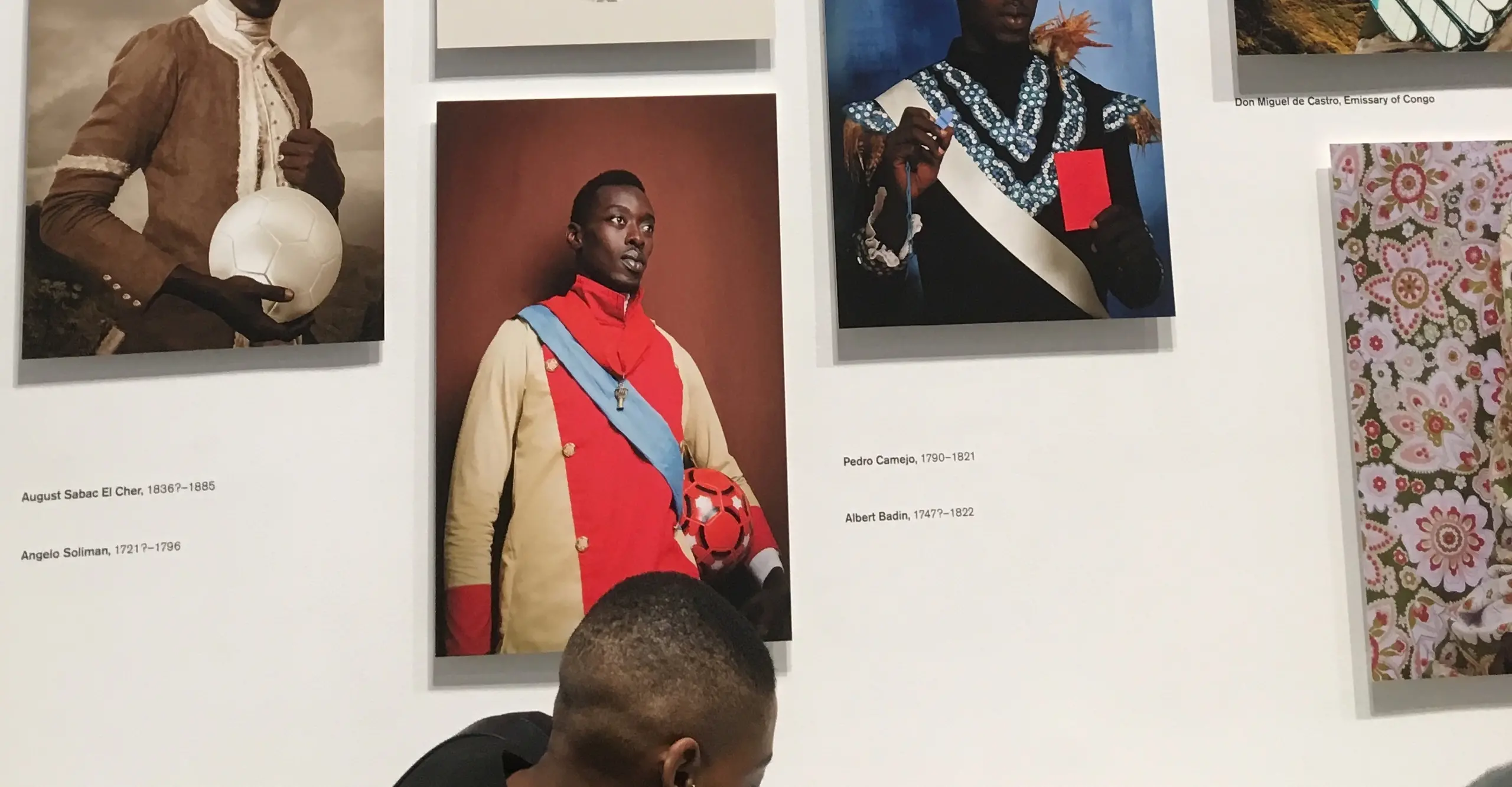During a talk at The Autograph on October 5th, Diop stressed that “you cannot become a hero without seeing yourself as such”. To me, ‘Liberty’ serves as a creative response to the fragmented history of the African diaspora. Because history is so often told by ‘the victor’, Black history is often erased. The scenes depicted range from Soweto Uprisings in 1976 South Africa to the Women’s War in 1929 Nigeria. Diop recreates these often untold stories, using a camera and his expert editing skills as both a tool for social justice and an affirmation of the truth.
In the other half of the exhibition, ‘Diaspora’, Diop explores the social phenomenon of football in African cultures. These images explore the often forgotten, but essential history of relationships between Africa and the rest of the world. Whether it be connections through trading, early diplomatic efforts or the legacy of the continental slave trade. Diop remakes these portraits of individuals who became prominent political figures during their time holding footballs, wearing cleats, or with goalie gloves. These works examine the surface level admiration for a modern football player by equating it to the representation of Africans in Western and Asian art history.
The exhibit as a whole is almost overwhelmingly colourful and each portrait is composed to fill the entire frame. Diop layers multiple versions of himself, eye-catching costumes, background colours, and scenes that almost fill the photo to capacity. Despite the multiple layers, the photos do not feel crammed. Everything in the shot is planned and expertly placed to signify something. Diop is filling in the empty gaps of history and the composition of the images reflects that idea of replenishment.
I left the exhibit stunned by how visually striking the work was but also interrogating my own connection to and knowledge of African culture and history.
– Kadijatou Diallo
